January Luxor Hashrate Derivatives Recap
Trading Activity, Market Participants, Hashprice Movement, and Contract Performance for Luxor’s First January 1-Month Hashprice NDF
By Ben Harper
If 2023 is going to be the year of Bitcoin mining derivatives, January was a great start.
January 2023 marked the launch of Luxor’s standardized monthly hashprice non-deliverable forward (“NDF''). In this market commentary, we will cover trading activity for the USD January 1-month contracts, the types of participants in the auction, and hashprice movement and contract performance during the month.
January Auction Period and Market Participants
Typically, the auction period for Luxor’s standardized monthly contracts takes place over the week prior to the start of the month. However, for the January period, we opened up the auction period on December 19 to account for the holidays.
During the auction period, Luxor meets with market participants to get a sense of interest in contract durations, sizes, and hashprice bids / offers. The majority of trade activity occurs on the last two days of the auction period.
In January, we saw participation from a diverse set of market participants. On the buy side, there were miners looking for temporary exposure to hashprice while procuring ASICs, speculators looking to profit on falling difficulty and rising bitcoin prices, and hosting companies looking to hedge their short hashprice position while curtailing operations for winter storms and elevated electricity prices. On the other hand, the sell side was predominantly miners looking to lock-in hashprice and hedge their revenues.
The majority of trade activity occurred on December 30 (the last Friday of the month) at a unit hashprice of $63.00 per PH/s/Day – a 4.5% premium to the average hashprice the previous day. However, there was some activity on December 27, where unit hashprice traded at $62.00 per PH/s/Day – a 1.3% premium to the average hashprice the previous day.
Hashprice and Component Performance
Overall, hashprice averaged $70.69 during January, beginning at $59.49 and rising to $75.72 by the end of the month. This rise was driven primarily by an increase in the price of Bitcoin, which had one of its best performing Januarys in history, rising almost 40% during the month. Bitcoin’s average price exceeded $20,000 in January to return to levels not seen since the FTX debacle.

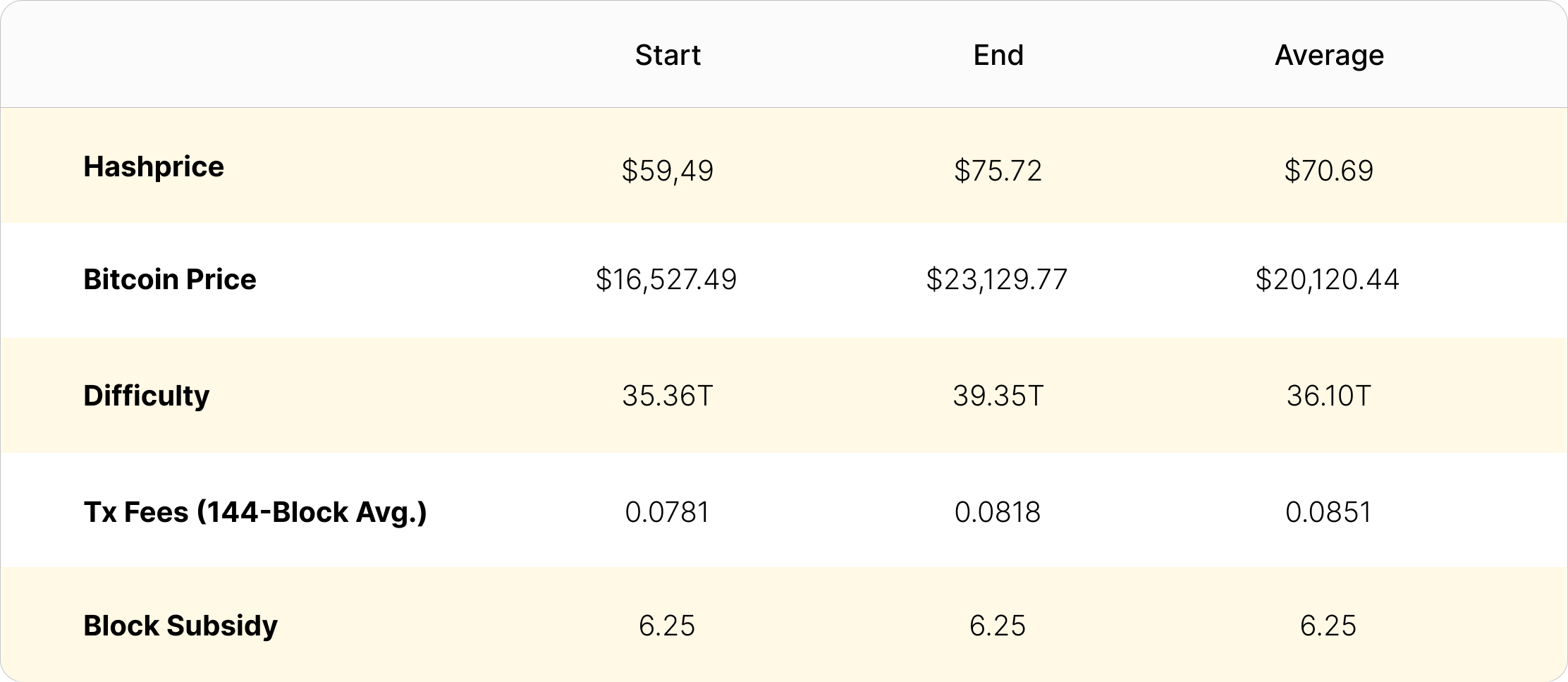
Network difficulty also rose during the month, from 35.36T to 39.35T. However, difficulty had a brief decline to 34.09T during the first half of the month as miners curtailed their operations for winter storms and elevated electricity prices.
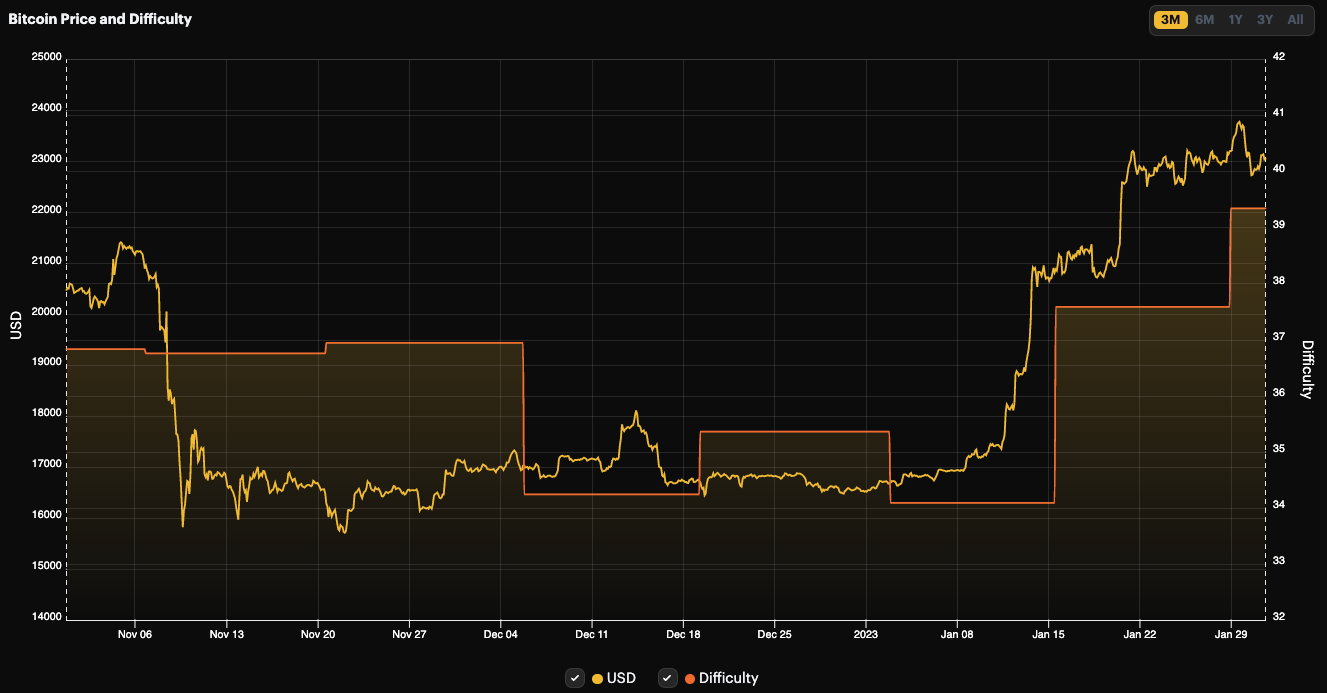
Transaction fees were relatively stable within the recent historical range, averaging 1.3% of the block reward.
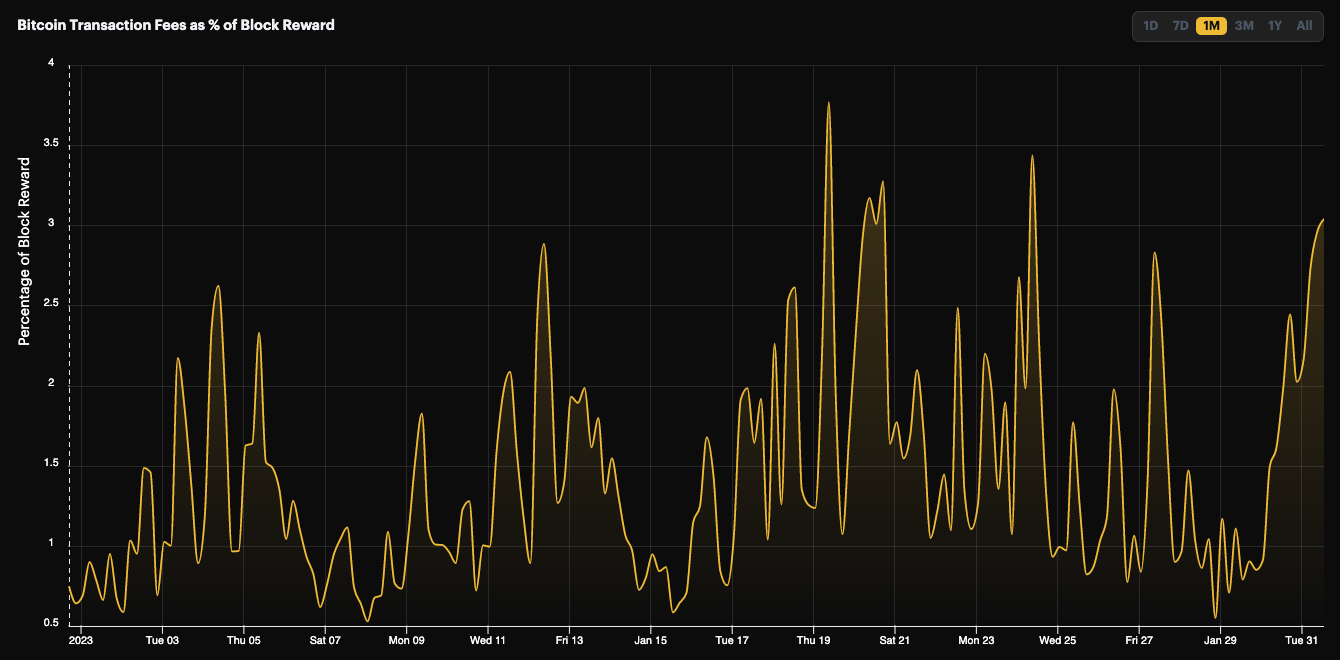
In terms of volatility, there was a return to more normal levels after a period of historic lows. This will make trading hashprice NDFs more attractive for speculators going forward.
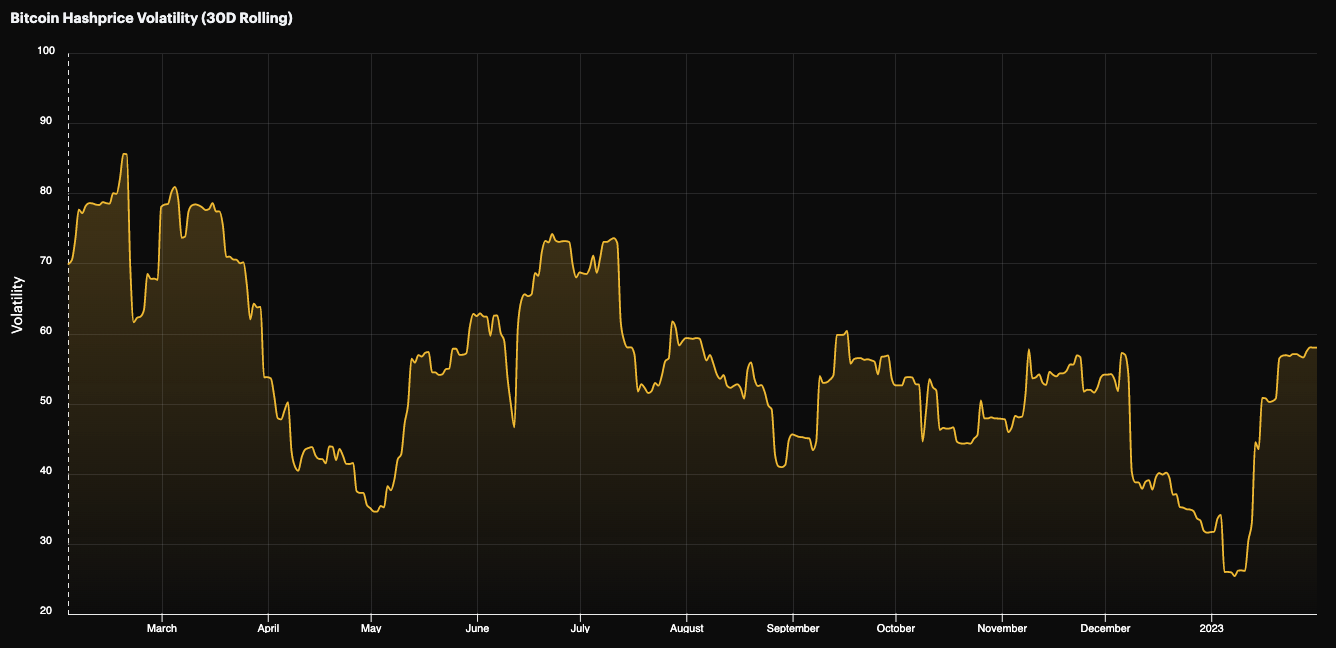
NDF Contract Settlement
For Luxor’s USD Hashprice NDF, at contract expiration, the difference between the unit hashprice and the final settlement rate is settled in cash or stablecoin. If the final settlement rate is higher than the unit hashprice, the seller pays the difference to the buyer. If the final settlement rate is lower than the unit hashprice, the buyer pays the difference to the seller.
The settlement rate is the average hashprice through the duration of the contract to account for the fact that hashrate is a continuously delivered commodity (like electricity). This stands in contrast to a discreetly delivered commodity (like corn or oil), which would instead settle against the final market value of the commodity at the end of the contract.
The settlement rate (average hashprice) for January was $70.69 per PH/s/Day. At the final trading price of $63.00 per PH/s/Day, this represented a unit profit of $7.69 for buyers and loss of $7.69 per unit for sellers of the contract. In percentage terms, a +12% change from unit hashprice.
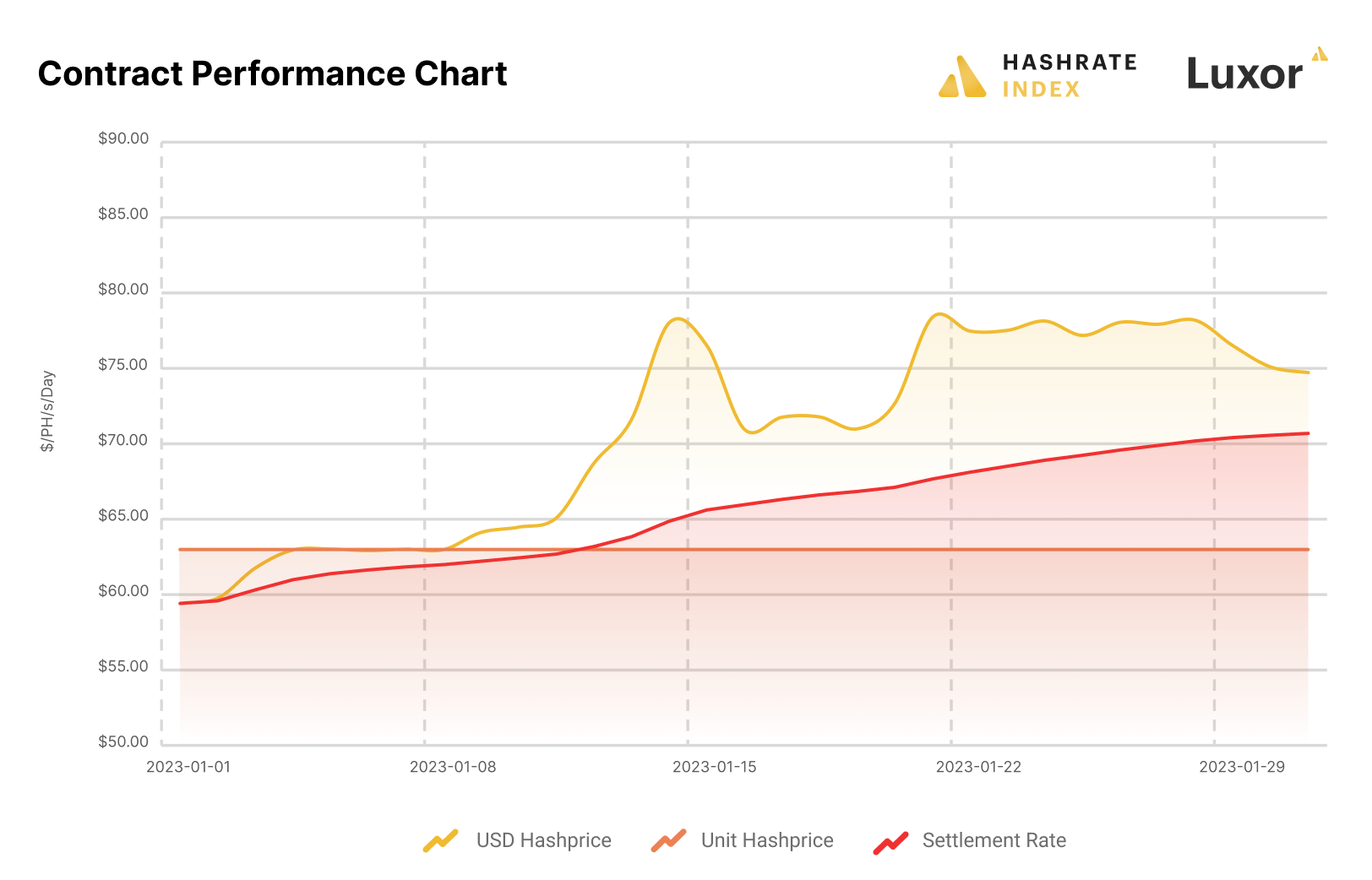
Concluding Thoughts
January was a great start to the year of Bitcoin mining derivatives. For the first time, Bitcoin miners were able to hedge revenue price risk, at a premium to spot price, and hosting companies were able to hedge their short hashprice positions as they curtailed operations. Buy-side investors earned a profit by providing revenue certainty to miners, and miners waiting to deploy ASICs and looking for temporary non-physical exposure also captured upside that would otherwise have been left on the table.
But perhaps most importantly, the rise in the price of Bitcoin to levels not seen since the FTX debacle was good for the entire ecosystem. Nobody can predict the future, but hopefully this was a sign of good things to come in 2023.
Disclaimer
This content is for informational purposes only, you should not construe any such information or other material as legal, investment, financial, or other advice. Nothing contained in our content constitutes a solicitation, recommendation, endorsement, or offer by Luxor or any of Luxor’s employees to buy or sell any derivatives or other financial instruments in this or in any other jurisdiction in which such solicitation or offer would be unlawful under the derivatives laws of such jurisdiction.
There are risks associated with trading derivatives. Trading in derivatives involves risk of loss, loss of principal is possible.
